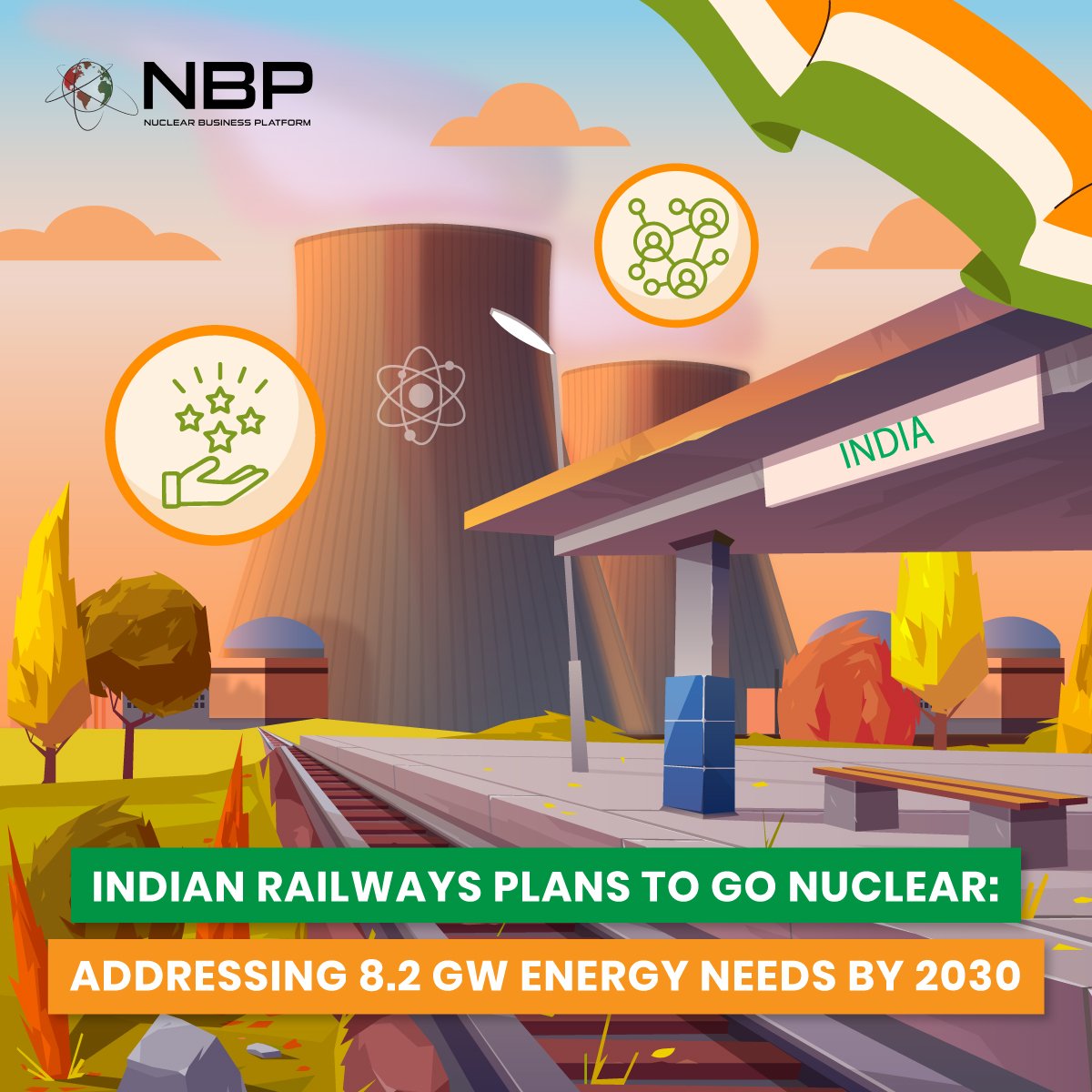Indian Railways Plans to Go Nuclear: Addressing 8.2 GW Energy Needs by 2030
Indian Railways, one of the world’s largest transportation networks, is striving to become a net zero carbon emitter by 2030. In pursuit of this goal, the organization is exploring various renewable energy sources, including solar, wind, and hydel power. Recently, there has been a renewed interest in nuclear energy as a viable option. With its promise of high reliability and zero emissions, nuclear power could become a transformative solution in providing consistent and clean energy. Indian Railways is revisiting this option with a serious intent to harness its potential.
Renewed Focus on Nuclear Power: Plans and Discussions
Indian Railways’ exploration of nuclear energy dates back to 2013 when its peak power requirement was around 4 GW. Initial discussions with NPCIL aimed to establish 400 MW of nuclear capacity. However, by 2017, the plans for a joint venture with NPCIL were ultimately abandoned.
With energy demands projected to rise to 8.2 GW by 2030, nuclear power is being reconsidered. Indian Railways is once again in talks with NPCIL, this time focusing on SMRs for captive power generation. These reactors, known for being compact, scalable, and safer than large reactors, could power regional rail networks and provide a stable power source to supplement solar and wind energy.
The Role of Renewable Energy and Why Nuclear is Necessary
Indian Railways has made significant strides in electrifying its network and adopting renewable energy. As of FY 2024, about 63,500 Route Kilometres (rkms) have been electrified, covering over 96% of the broad-gauge network. Additionally, the Railways has commissioned 147 MW of solar power and 103 MW of wind power plants, along with 177 MW of rooftop solar installations across 2,637 stations and service buildings.
However, renewable sources like solar and wind are intermittent, as their output fluctuates with time and weather. Indian Railways estimates it will need around 30 GW of renewable capacity by 2029-30 to meet its demands, but the variability in supply across regions poses challenges.
Nuclear energy offers a solution with consistent, high-capacity output, unaffected by weather or geography. Integrating nuclear power into the energy mix would provide a stable power supply for high-demand routes, freight corridors, and hubs, enhancing operational efficiency and reducing dependence on external energy suppliers.
Business Opportunities Arising from Nuclear-Powered Trains
The shift to nuclear-powered trains opens up several business opportunities beyond energy supply for Indian Railways. As nuclear power integrates into the rail system, new possibilities for investment, partnerships, and technological advancements arise.
Nuclear Technology Development and Manufacturing: The demand for SMRs will boost India’s nuclear technology sector. Companies involved in reactor design and construction will see increased demand, leading to public-private partnerships. This could position Indian firms as key players in global SMR development for transportation and other industries.
Energy Infrastructure Development: Nuclear-powered trains will need advanced infrastructure for generating and transmitting nuclear energy. This offers opportunities for companies in nuclear plant construction and transmission, as well as firms specializing in grid management and smart energy systems.
Railway Electrification and Technological Innovation: The introduction of nuclear-powered trains will drive innovations in train electrification and energy management. Companies can develop solutions to optimize nuclear energy usage, with potential spillover into other transportation modes like electric buses and trucks.
Supply Chain and Component Manufacturing: A nuclear-powered rail network requires a specialized supply chain for reactor components and safety systems. This will boost demand for companies involved in manufacturing high-tech materials, sensors, and control systems, fostering domestic growth in nuclear technologies.
Safety, Maintenance, and Workforce Development: Nuclear-powered trains will require expertise in safety and maintenance, creating opportunities for training institutes and firms in nuclear safety. New education and vocational programs will be needed to build a skilled workforce, and nuclear insurance providers will also benefit.
International Collaboration and Export Potential: India’s adoption of nuclear trains could lead to international collaborations and export opportunities. Indian firms could share expertise with countries exploring nuclear-powered transport, positioning India as a leader in clean energy transportation solutions
The potential adoption of nuclear-powered trains in India offers significant business opportunities, with the capacity to transform both the energy and transportation sectors. Although still in its nascent stages, the integration of nuclear power into rail transportation could create new markets across technology, infrastructure, safety, and workforce training. India’s nuclear sector, currently operating 24 reactors generating 8.18 GWe and aiming to reach 100 GWe by 2047, is poised for significant growth. This expansion underscores the government's commitment to nuclear innovation and sustainable transportation, highlighted by the focus on developing small modular reactors, including the Bharat Small Reactors.
Nuclear reactors already power submarines and aircraft carriers, enabling long operation without refuelling. Nuclear propulsion is being explored for space travel, and in the future, SMRs could power freight ships, reducing maritime emissions. Co-located with electric vehicle (EV) charging stations, SMRs could supply clean energy for EVs and support hydrogen production for clean fuel. These advancements could accelerate India's shift to a low-carbon economy and strengthen its position as a global leader in sustainable infrastructure.
The 5th edition of India Nuclear Business Platform (INBP) will take place in Mumbai this 19-20 November 2024. The industry meeting will feature all the officials and players across the Indian nuclear supply chain. For more information on this meeting including exhibition opportunities, click here



